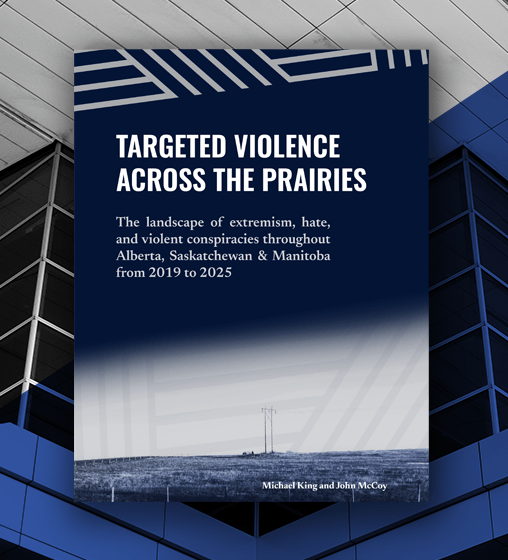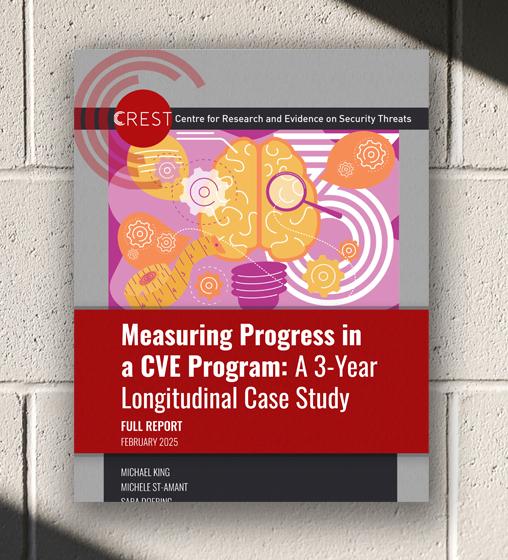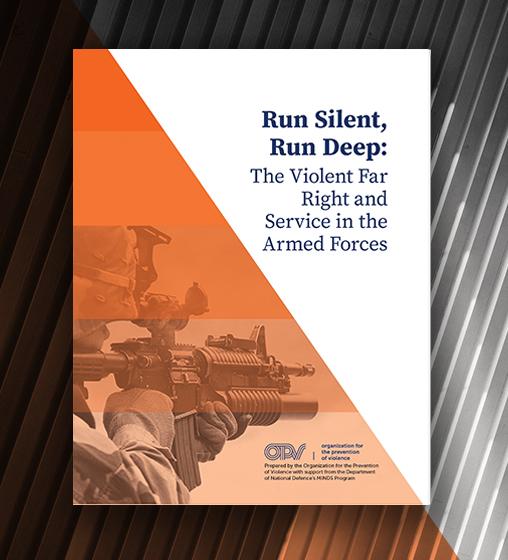In this article from Paula Tran of Global News, our latest report on hate-motivated violence and extremism in Alberta and beyond is discussed.
Hate crimes and extremism in Alberta shifting to lone-actor behaviour: report
Published by Paula Tran in Global News on September 2, 2022
A new report on extremism and hate in Alberta suggests ideological extremism is shifting to lone-actor behaviour and accelerationism, which can potentially be more dangerous for civilians.
The report — published by the Organization for the Prevention of Violence (OPV) — outlined changes in hate-motivated violence, extremism and terrorism in Alberta and Canada from 2019 to 2022.
Researchers found that there has been a “significant rise” in ideologically-motivated violent extremism (IMVE) and anti-authority movements in Canada in 2020, especially in online spaces. Xenophobic sentiments are especially rising in popularity, the report said.
Michele St.-Amant, a research associate for the OPV, said white nationalist and anti-government groups such as the Sons of Odin and the Three Percenters have largely splintered despite the rise of xenophobia and anti-authority rhetoric. St.-Amant attributed this to bad press and increased attention from law enforcement.
St.-Amant also said groups can splinter because leaders leave the province or because of internal disagreements.
“Splinter groups in Alberta don’t do so well. The groundwork is falling out of favour,” she said.
St.-Amant also said more and more extremists are adopting accelerationist tactics to promote their ideas. Accelerationism is the idea that modern society is inherently flawed and must be destroyed and rebuilt, according to the report.
Accelerationists rely on lone-actors and individuals to spread their message and sow seeds of discontent, the report said. St.-Amant noted the rise in IMVE is a result of accelerationism and “salad-bar extremism”, where individuals are picking and choosing from a “buffet” of ideologies that may be contradictory.
“When individuals are highly motivated and not connected to groups, this can potentially lead to more violence,” St.-Amant said.
“Salad-bar extremism is emerging in the U.S. We see Canada is moving towards this, but it’s hard to access from a research and law enforcement standpoint.”
“There is no uptick in violence in Canada compared to the States, but law enforcement officials we interviewed said there is an appetite.”
Hate crimes up in Alberta
Alberta witnessed a rise in police-reported hate crimes over the last several years.
In Calgary, the number of police-reported hate crimes increased from 80 in 2019 to 141 in 2020, a 76 per cent increase. This was the highest number of police-reported hate crimes in the city, according to the report.
In Edmonton, the number of police-reported hate crimes increased from 73 in 2019 to 79 in 2020. However, police-reported hate crimes in Edmonton increased by 58 per cent between 2016 to 2020.
The report noted that the actual number of hate crimes is likely even higher due to underreporting. Many victims are reluctant to report incidents to police because they come from marginalized communities which have had historically negative relations with law enforcement.
“There needs to be a community approach to hate crimes and extremism. Community members can often be the first reporters for hate and extremist behaviour,” St.-Amant said.
“Law enforcement can also host open forums and town halls as a safe space for community members to voice concerns, as a potential way to get closer to the community.”
The report also noted that hate crimes in Alberta are varied in their targeting. Attackers often target individuals for more than one element of their identities.
For example, seven Black Muslim women were targeted, threatened or attacked in Edmonton between 2020 and the publication of the report.
But the report also noted that Canada lacks a standalone hate crime offence, while hate-motivated offences are dealt with differently by the Criminal Code. This means that these incidents have high thresholds to meet and police must exercise caution when investigating.
This also means victims feel disempowered because little action is taken if they do decide to report on the event.
“The growth in non-criminal, yet still damaging, hate-motivated incidents underscore the reality that while policy and legislative responses to hate are necessary, they are ultimately likely to be insufficient, and a broader societal response is required,” the report reads.
Grooming a concern
St.-Amant noted that extremists are looking for “fresh minds” to join their cause, which often means targeting younger boys and men. However, these tactics and techniques are not new.
A 2013 report from European nonprofit institution RAND Corporation found that the internet creates more opportunities to become radicalized and can often accelerate the process.
A federal public safety report in 2018 found that vulnerable people, such as those with poor family relationships and large amounts of debt, are also prone to radicalization from extremist groups.
“Sometimes you can see little QR codes and propaganda in neighbourhoods, which you can scan with your smartphone and it will take you to an extremist website,” St.-Amant said.
Paula Tran. “Hate crimes and extremism in Alberta shifting to lone-actor behaviour: report.” Global News, 2 September 2022



